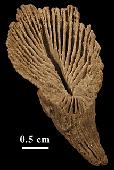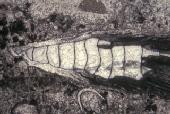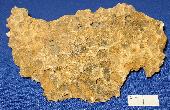 Cnidarians
Cnidarians
|
|
What are Cnidarians? The name Cnidaria comes from the Greek word “cnidos,” for “stinging nettle.” All cnidarians have specialized cells that can inject poison into their prey or even hapless passers-by. With no hard parts, they are not preserved often, and their fossils may be difficult to recognize.
First known fossil occurrence: Precambrian. Last known fossil occurrence: Quaternary. This group has living relatives. Cool Cnidarians links: Search for images of Cnidarians on Google |
|



